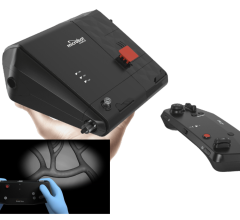
August 13, 2019 — A simple change in the way health professionals track their patients’ progress has brought improved healing of life-altering open sores caused by chronic venous insufficiency (CVI) , according to a new article in the Journal for Vascular Surgery – Venous and Lymphatic Disorders.
In a study conducted in Pittsburgh, the healing rate of CVI patients increased more than 46 percent compared to the pre-study average after medical teams began a formal collaboration and developed a visual infographic to track how steadily wounds were, or were not, closing. That helped physicians step in at just the right time with other tools to help patients improve.
For the patients in the University of Pittsburgh Medical Center study, the process has offered a ray of hope. Before the study began in 2014, said vascular surgeon Ulka Sachdev, M.D., one of the researchers, their institution provided high-quality, patient-centered care, but had no coordinated or comprehensive care plan for patients with CVI. The average rate of healing for long-term wounds was around 53 percent.
Over several years, the clinic staff maintained the same care they were giving patients but changed the way they monitored patient progress. The project was spear-headed by vascular surgeon Ellen Dillavou, M.D., and physician assistant Julie Bitner, who implemented a new wound care tracking process in their electronic medical records software, then added a crucial touch. Instead of typing the dimensions of the wound in their narrational notes, they used the software to graph the wound dimensions over time.
At a glance, nurses and doctors could see if the patient’s chart was going up or down. If a patient’s progress had stalled, it could be a good time to suggest smoking cessation or weight loss programs to the many patients who smoke or are overweight or obese. Cigarette smoking slows healing and obesity puts additional pressure on the feet and ankles.
While the effect of medical records on healing are seldom studied, this research found a direct correlation, the researchers noted.
“After the initial time investment to get the software set up, it was no more time intensive than standard visit documentation and yielded better longitudinal results,” Sachdev said.
The average rate of healing was 79 percent at study’s end.
In some cases, a surgical procedure can improve vein flow back to the heart or remove dysfunctional veins. Patients considering such treatment should be sure to consult with board-certified surgeons and consider getting more than one opinion.
Sachdev and fellow researchers are developing new research that may one day point the way to prevent chronic venous insufficiency. Until then, she said, “anything that speeds up healing can improve the quality of life for these patients and give them hope.”
For more information: www.jvsvenous.org
Reference
Bitner J., Sachdev U., Hager E.S., Dillavou E.D. Standardized care protocol and modifications to electronic medical records to facilitate venous ulcer healing. Journal of Vascular Surgery: Venous and Lymphatic Disorders, published online Feb. 15, 2019. https://doi.org/10.1016/j.jvsv.2018.11.009


 January 14, 2025
January 14, 2025 







